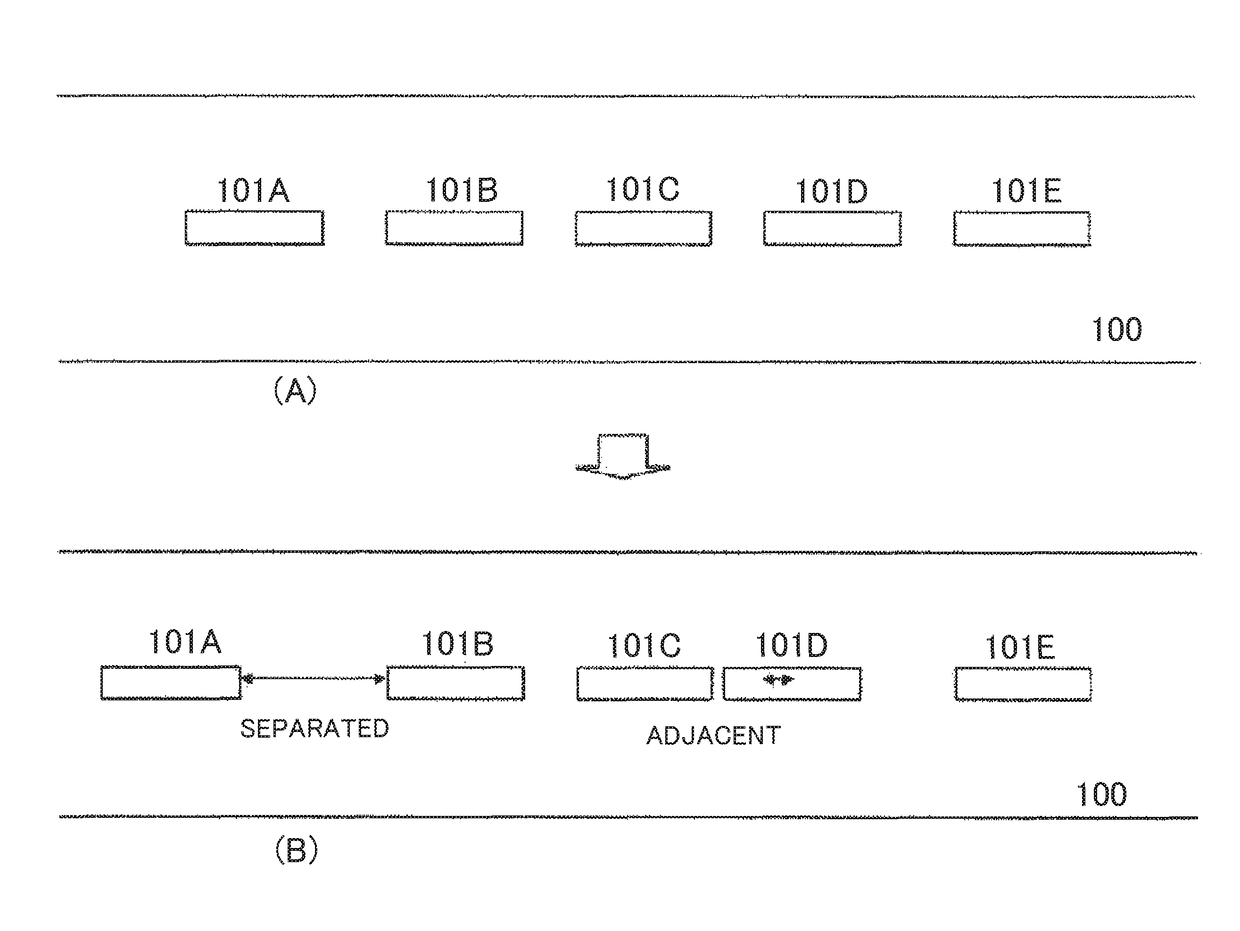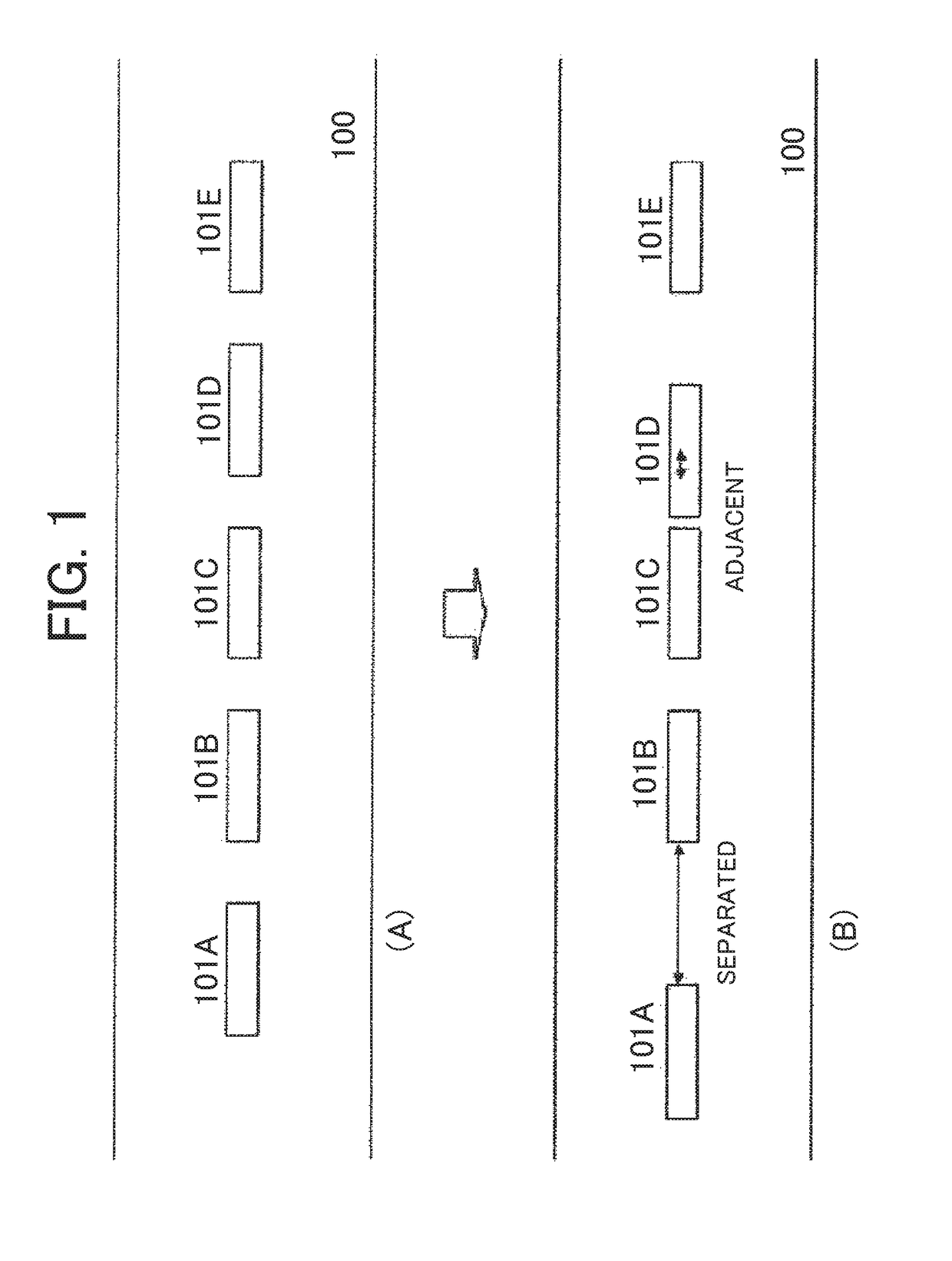Static electricity distribution measuring apparatus and static electricity distribution measuring method
a measuring apparatus and static electricity technology, applied in the direction of instruments, using reradiation, 2d-image generation, etc., can solve the problems of product manufacturing yield decline, product yield decline, manufacturing speed (manufacturing efficiency) decline, etc., to achieve easy comprehension, simple construction, and constant surface area
- Summary
- Abstract
- Description
- Claims
- Application Information
AI Technical Summary
Benefits of technology
Problems solved by technology
Method used
Image
Examples
first exemplary embodiment
[0103]A first exemplary embodiment will be described.
[0104](Complete Overview)
[0105]FIG. 4 is a block diagram of a static electricity distribution measuring apparatus according to a first exemplary embodiment of the present disclosure. A static electricity distribution measuring apparatus 1 measures a static electricity distribution on the measurement target 200.
[0106]The measurement target 200 is various parts or products with the potential for building up static electricity as described above. For example, the measurement target 200 is any out of electronic parts, electronic elements, semiconductor integrated elements, electronic substrates, electronic equipment, machinery parts, transportation equipment, chemical products, foodstuffs, paper products, ceramic materials, plastic materials, polymer materials, film products, rubber products, resin products, metal products, pharmaceuticals and textile products, used at a manufacturing site. Naturally, these are examples, and other par...
second exemplary embodiment
[0177]Next, a second exemplary embodiment will be described.
[0178](Display)
[0179]FIG. 7 is a block diagram of a static electricity distribution measuring apparatus according to a second exemplary embodiment of the present disclosure. In addition to the same elements as FIG. 4, a display 7 is added. Description is omitted for elements having the same reference signs as in FIG. 4.
[0180]The display 7 displays a static electricity distribution diagram (for example, FIG. 6) drawn by the drawer 6. Through this display, the worker can easily understand visually the state of the static electricity distribution on the measurement target 200. For example, the display 7 may be a specialized monitor. Or, when the measurer 4 through drawer 6 are realized by a general-purpose personal computer, the monitor with which the personal computer is provided may fill the role of the display 7.
[0181]Because the display 7 is prepared, the worker can not only easily understand visually the static electricit...
PUM
 Login to View More
Login to View More Abstract
Description
Claims
Application Information
 Login to View More
Login to View More - R&D
- Intellectual Property
- Life Sciences
- Materials
- Tech Scout
- Unparalleled Data Quality
- Higher Quality Content
- 60% Fewer Hallucinations
Browse by: Latest US Patents, China's latest patents, Technical Efficacy Thesaurus, Application Domain, Technology Topic, Popular Technical Reports.
© 2025 PatSnap. All rights reserved.Legal|Privacy policy|Modern Slavery Act Transparency Statement|Sitemap|About US| Contact US: help@patsnap.com



